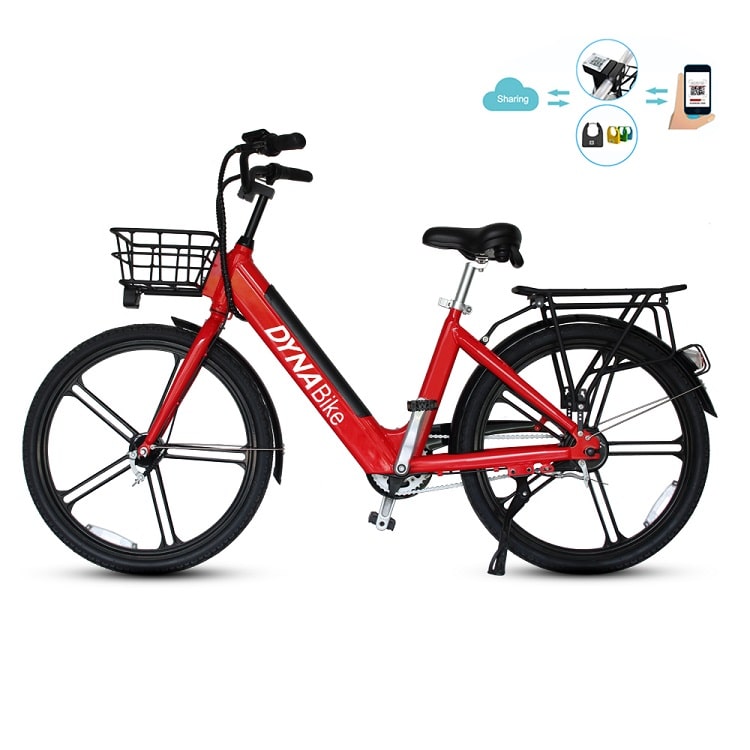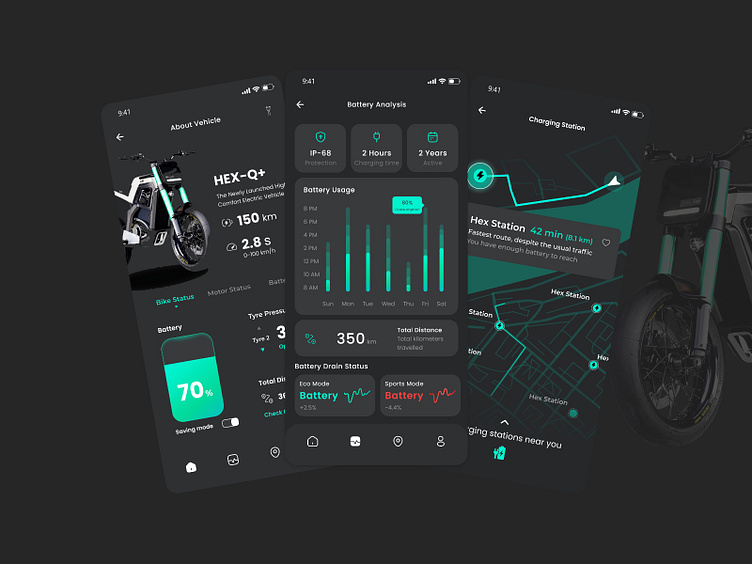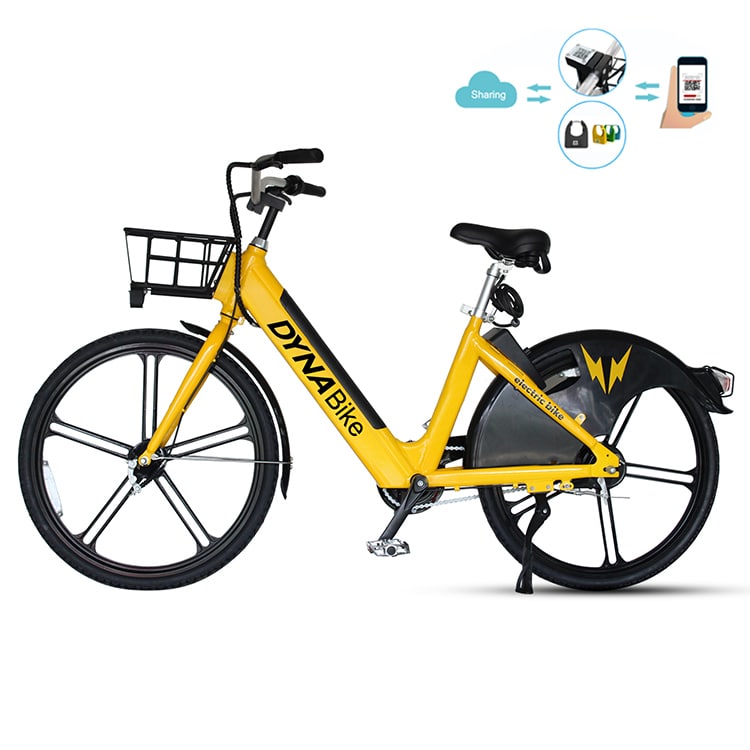The Intersection of eBikes and IoT
The integration of Internet of Things (IoT) technology in eBikes has become a growing trend, offering numerous benefits for both manufacturers and consumers. The term “IoT” refers to the network of physical devices, vehicles, buildings, and other items embedded with sensors, software, and network connectivity that enable these objects to collect and exchange data. By incorporating IoT technology in eBikes, manufacturers can enhance the user experience, improve safety, and create new business opportunities.
IoT technology can provide eBike manufacturers with valuable data on usage patterns, maintenance needs, and user behavior. This data can be used to optimize the design and functionality of eBikes, as well as to develop new services and features. For example, manufacturers can use data on riding habits to suggest personalized routes or to offer tailored maintenance schedules. Additionally, IoT technology can enable remote monitoring and diagnostics, reducing downtime and improving customer satisfaction.
Consumers can also benefit from the integration of IoT technology in eBikes. For instance, smart locks and GPS tracking can provide increased security and convenience. Fitness monitoring features can help users track their progress and achieve their health goals. Furthermore, IoT-enabled eBikes can be integrated with other smart devices, such as smartphones or smart home systems, creating a seamless and connected user experience.
However, the implementation of IoT technology in eBikes also presents challenges and considerations for manufacturers. Security and privacy are paramount, as IoT devices can be vulnerable to hacking and data breaches. Manufacturers must ensure that user data is protected and that cybersecurity measures are in place. Cost is another consideration, as the development and integration of IoT technology can be expensive. Manufacturers must balance the benefits of IoT technology with the costs of implementation.

eBike Models Embracing IoT
The integration of IoT technology in eBikes has led to the development of innovative and advanced eBike models that offer enhanced functionality and user experience. Some examples of eBike models that have successfully incorporated IoT technology include:
- Smart Locks: Some eBike models, such as the VanMoof S3, come with smart locks that can be locked and unlocked using a smartphone app. This feature provides increased security and convenience, as users can easily lock their bikes and grant access to others.
- GPS Tracking: eBikes equipped with GPS tracking technology, such as the Cowboy 3, allow users to locate their bikes in real-time. This feature can provide peace of mind for users who are concerned about theft or loss.
- Fitness Monitoring: IoT technology can also be used to monitor users’ fitness levels and provide real-time data on speed, distance, and calories burned. For example, the Gocycle G4 features a built-in fitness tracker that can be synced with a smartphone app.
- Remote Monitoring: IoT technology can enable remote monitoring of eBikes, allowing manufacturers to detect and diagnose issues before they become major problems. For instance, the Stromer ST5 features a connectivity module that allows for remote diagnostics and software updates.
These eBike models demonstrate the potential of IoT technology to enhance eBike functionality and user experience. By incorporating IoT technology, eBike manufacturers can create innovative and advanced eBike models that meet the evolving needs and preferences of consumers.

How IoT Enhances eBike Functionality
IoT technology has the potential to significantly enhance eBike functionality, providing benefits for both manufacturers and consumers. Some of the ways IoT technology can improve eBike functionality include:
- Increased Safety: IoT technology can enhance eBike safety by providing features such as automatic lighting, collision avoidance, and anti-theft alarms. For example, the eBike manufacturer Cowboy has developed a smart bell that can detect and alert riders to potential hazards, such as approaching cars or pedestrians.
- Better User Experience: IoT technology can also improve the user experience of eBikes by providing features such as GPS navigation, fitness tracking, and mobile app integration. For instance, the VanMoof S3 eBike features a mobile app that allows users to customize their riding experience, including adjusting the motor assistance level and setting anti-theft alarms.
- Remote Monitoring Capabilities: IoT technology can enable remote monitoring of eBikes, allowing manufacturers to detect and diagnose issues before they become major problems. For example, the Stromer ST5 eBike features a connectivity module that allows for remote diagnostics and software updates, reducing downtime and maintenance costs.
By incorporating IoT technology, eBike manufacturers can create innovative and advanced eBike models that offer enhanced functionality and user experience. However, it is important for manufacturers to consider the challenges and considerations associated with implementing IoT technology, such as security, privacy, and cost.

Considerations for Implementing IoT in eBikes
While IoT technology has the potential to significantly enhance eBike functionality, manufacturers must also consider the challenges and considerations associated with implementing IoT technology. Some of the key considerations for manufacturers when implementing IoT technology in eBikes include:
- Security: Security is a major concern for IoT-enabled eBikes, as they can be vulnerable to cyber attacks and data breaches. Manufacturers must ensure that their eBikes have robust security measures in place, such as encryption, secure communication protocols, and regular software updates. It is also important for manufacturers to educate consumers about security best practices and encourage them to take steps to protect their eBikes from cyber threats.
- Privacy: Privacy is another concern for IoT-enabled eBikes, as they can collect and transmit sensitive data about the user, such as location, fitness metrics, and riding habits. Manufacturers must ensure that they have clear privacy policies in place and that they are transparent about how they collect, use, and share user data. They must also provide users with the ability to opt-out of data collection or delete their data if they choose to do so.
- Cost: Implementing IoT technology in eBikes can be expensive, as it requires additional hardware, software, and development costs. Manufacturers must carefully consider the cost-benefit analysis of implementing IoT technology and ensure that the benefits outweigh the costs. They must also consider the potential impact on the price of the eBike and ensure that it remains competitive in the market.
By carefully considering these challenges and considerations, manufacturers can successfully implement IoT technology in eBikes and provide consumers with innovative and advanced eBike models that offer enhanced functionality and user experience. However, it is important for manufacturers to prioritize security, privacy, and cost in order to create a sustainable and successful eBike and IoT ecosystem.

The Future of eBikes and IoT
The integration of IoT technology in eBikes is still in its early stages, but there are already many exciting developments and potential applications on the horizon. Here are some of the ways that IoT technology could shape the future of eBikes:
- Integration with Smart Cities: As cities become smarter and more connected, eBikes could play an increasingly important role in urban transportation. IoT-enabled eBikes could be integrated with smart city infrastructure, such as traffic lights, bike-sharing systems, and public transportation networks, to create a seamless and efficient transportation ecosystem. For example, eBikes could communicate with traffic lights to optimize traffic flow, or they could be integrated with bike-sharing systems to allow users to easily locate and rent eBikes.
- Integration with Autonomous Vehicles: Autonomous vehicles are expected to become a major part of the transportation landscape in the coming years, and eBikes could play a complementary role in this ecosystem. IoT-enabled eBikes could communicate with autonomous vehicles to improve safety and efficiency. For example, eBikes could alert autonomous vehicles to their presence, or they could be used as a last-mile solution for autonomous vehicle drop-offs.
- Predictive Maintenance: IoT technology could enable predictive maintenance for eBikes, which would help to reduce downtime and maintenance costs. By collecting data on eBike usage and performance, manufacturers could identify potential issues before they become major problems. This could include monitoring battery life, detecting wear and tear on components, and identifying potential software bugs.
- Personalized User Experience: IoT technology could enable a more personalized user experience for eBike riders. By collecting data on rider preferences and habits, eBikes could be customized to provide a more enjoyable and efficient riding experience. For example, eBikes could adjust the level of pedal assistance based on the rider’s fitness level, or they could suggest routes based on the rider’s previous riding habits.
The integration of IoT technology in eBikes has the potential to transform the way we think about urban transportation. By creating a more connected and efficient transportation ecosystem, we can reduce traffic congestion, improve air quality, and make our cities more livable and sustainable. As the technology continues to evolve, we can expect to see even more exciting developments and applications in the world of eBikes and IoT.
How to Choose an eBike with IoT Features
As the trend of integrating IoT technology in eBikes continues to grow, consumers have more options than ever before when it comes to choosing an eBike with smart features. However, with so many options available, it can be difficult to know where to start. Here are some tips and guidelines for choosing an eBike with IoT features:
- Security: One of the most important considerations when choosing an eBike with IoT features is security. Look for eBikes that have robust security features, such as GPS tracking, remote locking, and anti-theft alarms. Additionally, make sure that the eBike’s software is regularly updated to address any potential security vulnerabilities.
- Compatibility: Make sure that the eBike’s IoT features are compatible with your smartphone or other devices. Look for eBikes that support popular operating systems, such as iOS and Android, and that have user-friendly apps that are regularly updated.
- User-friendliness: IoT features can be complex, so it’s important to choose an eBike that is easy to use. Look for eBikes that have intuitive user interfaces and clear instructions. Additionally, make sure that the eBike’s IoT features are easy to access and control, even when you’re on the go.
- Battery Life: IoT features can consume a lot of battery life, so it’s important to choose an eBike that has a long-lasting battery. Look for eBikes that have large-capacity batteries and that are energy-efficient. Additionally, make sure that the eBike’s battery is easy to charge and replace.
- Customer Support: Finally, make sure that the eBike manufacturer offers excellent customer support. Look for manufacturers that have a reputation for providing prompt and helpful support, and that offer comprehensive warranties and return policies.
By considering these factors, you can choose an eBike with IoT features that meets your needs and provides a safe, enjoyable, and convenient riding experience. As the technology continues to evolve, we can expect to see even more innovative and exciting developments in the world of eBikes and IoT.

Privacy and Security Concerns with IoT-Enabled eBikes
As eBikes continue to incorporate more IoT technology, it’s important to consider the potential privacy and security concerns associated with these devices. Here are some recommendations for protecting user data and maintaining cybersecurity:
- Use Strong Passwords: One of the simplest ways to protect your eBike’s IoT features is to use strong, unique passwords. Avoid using the same password for multiple devices, and consider using a password manager to keep track of your passwords.
- Regularly Update Software: Make sure that your eBike’s software is regularly updated to address any potential security vulnerabilities. Set up automatic updates if possible, and check for updates regularly.
- Limit Data Collection: Consider the amount of data that your eBike’s IoT features are collecting, and limit this data collection if possible. Avoid sharing sensitive information, such as your home address or credit card information, with your eBike’s IoT features.
- Use Secure Connections: Make sure that your eBike’s IoT features are using secure connections, such as HTTPS or SSL. Avoid using public Wi-Fi networks, which can be easily compromised.
- Consider a VPN: A virtual private network (VPN) can provide an additional layer of security for your eBike’s IoT features. A VPN can help to protect your data from hackers and other cyber threats.
By following these recommendations, you can help to protect your privacy and maintain cybersecurity when using IoT-enabled eBikes. It’s important to remember that as technology continues to evolve, new security threats will emerge. By staying vigilant and taking proactive steps to protect your data, you can enjoy the benefits of IoT-enabled eBikes while minimizing the potential risks.

Environmental Impact of IoT-Enabled eBikes
As eBikes continue to incorporate more IoT technology, it’s important to consider the potential environmental impact of these devices. While eBikes themselves offer a more sustainable mode of transportation compared to traditional cars, the use of IoT technology can have both positive and negative effects on the environment.
Positive Environmental Impact
One of the main environmental benefits of IoT-enabled eBikes is increased energy efficiency. IoT technology can help to optimize the use of eBike batteries, reducing energy consumption and extending the battery life. Additionally, IoT-enabled eBikes can be integrated with smart grids, allowing for the use of renewable energy sources such as wind or solar power. This can further reduce the carbon footprint of eBike transportation.
Negative Environmental Impact
However, there are also potential negative environmental impacts of IoT-enabled eBikes. The production and disposal of eBike batteries and other IoT components can contribute to e-waste, which can have harmful effects on the environment. Additionally, the use of IoT technology requires energy, which can contribute to increased energy consumption and carbon emissions. It’s important for manufacturers to consider the entire lifecycle of IoT-enabled eBikes, from production to disposal, in order to minimize the negative environmental impact.
Sustainable Practices for IoT-Enabled eBikes
To minimize the negative environmental impact of IoT-enabled eBikes, manufacturers can adopt sustainable practices such as:
- Design for the Environment: Manufacturers can design eBikes and IoT components with the environment in mind, using sustainable materials and minimizing waste. This can include using recycled materials, reducing packaging, and designing for easy disassembly and recycling.
- Energy Efficiency: Manufacturers can focus on energy efficiency in the design and production of IoT-enabled eBikes, reducing energy consumption and carbon emissions. This can include using low-power components, optimizing battery life, and integrating with renewable energy sources.
- End-of-Life Management: Manufacturers can implement responsible end-of-life management practices for IoT-enabled eBikes, including recycling and disposal of batteries and other components. This can help to minimize e-waste and reduce the environmental impact of disposal.
By adopting sustainable practices, manufacturers can help to minimize the negative environmental impact of IoT-enabled eBikes while still providing the benefits of increased safety, better user experience, and remote monitoring capabilities.


